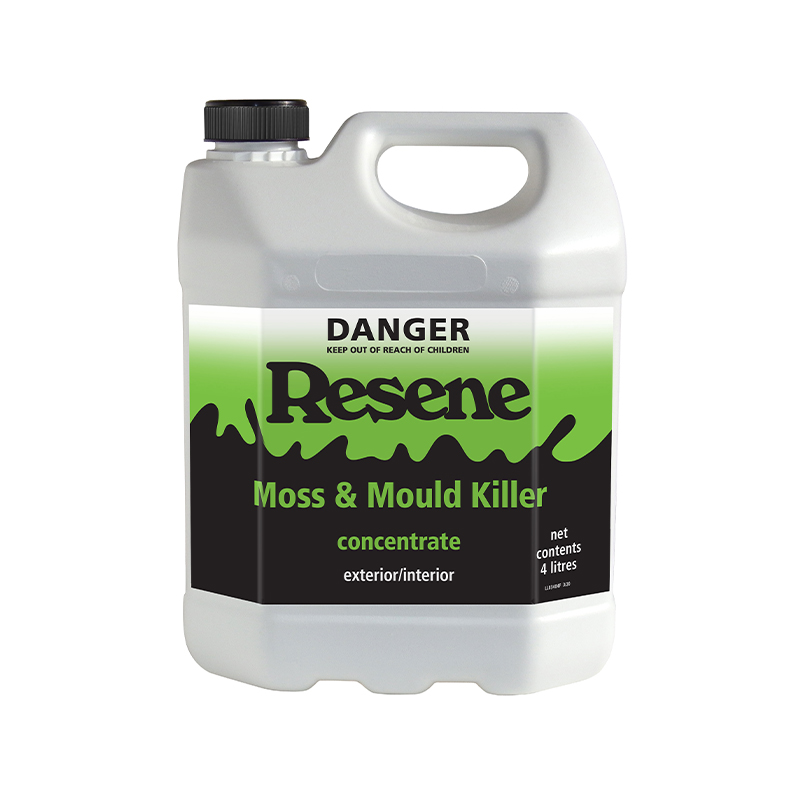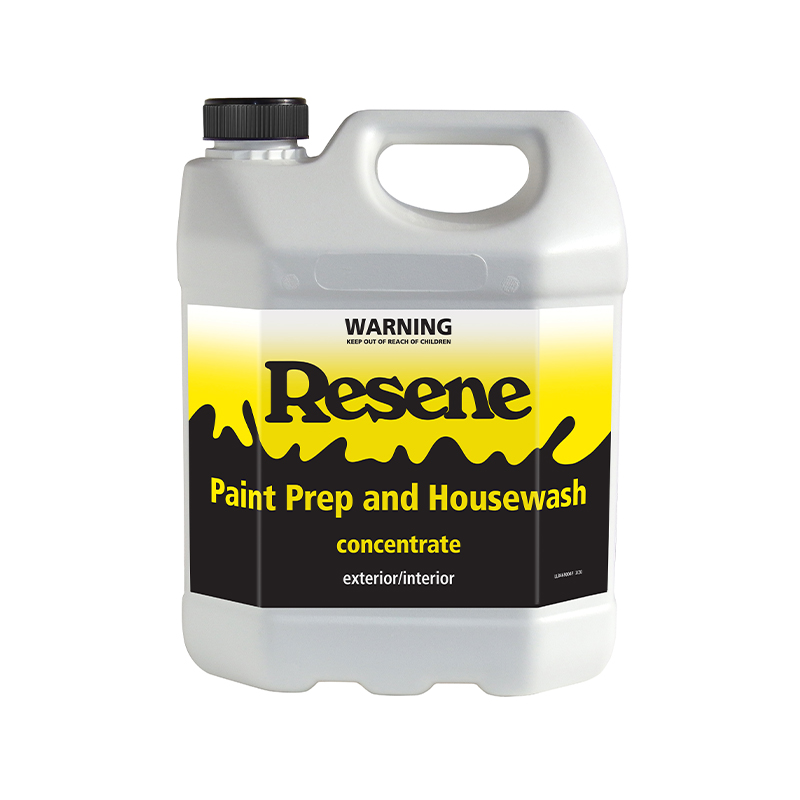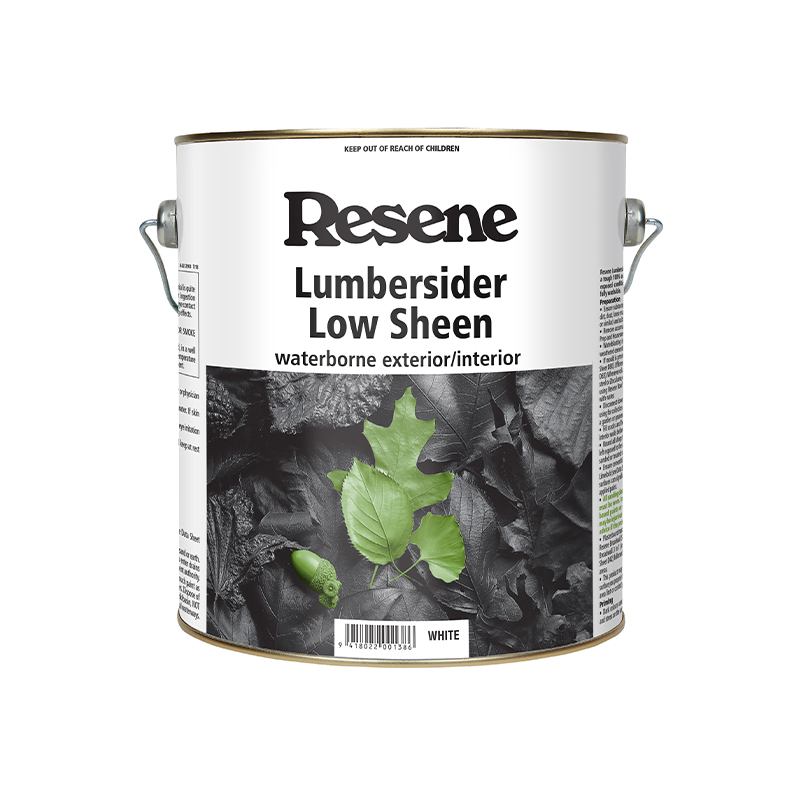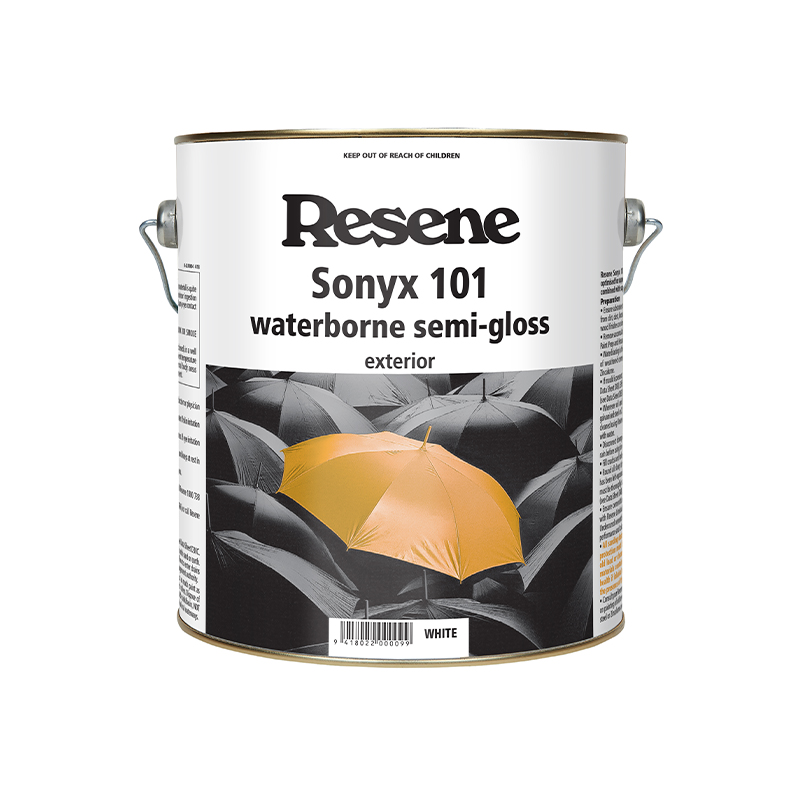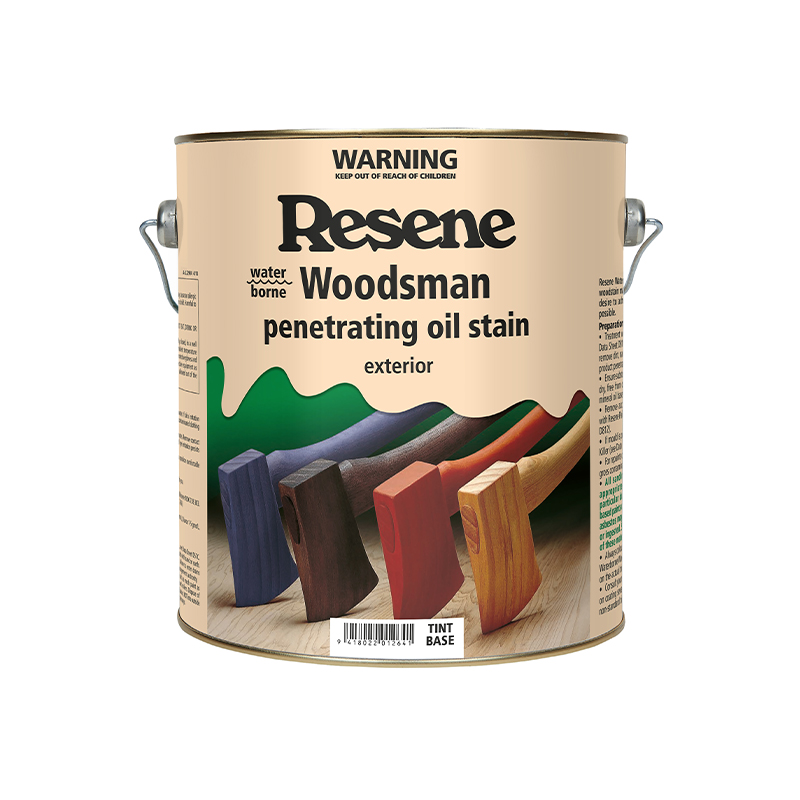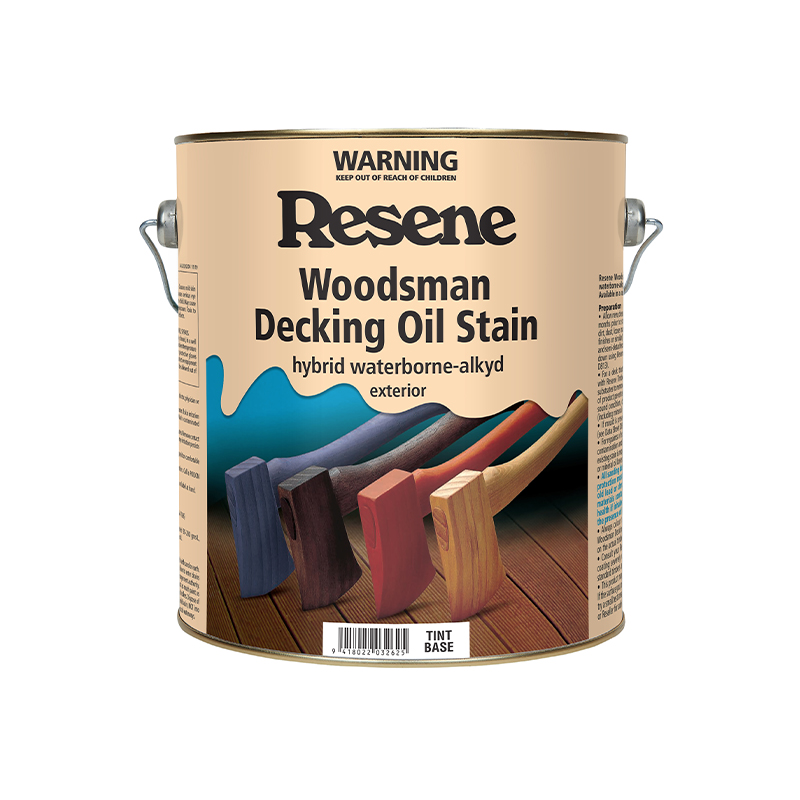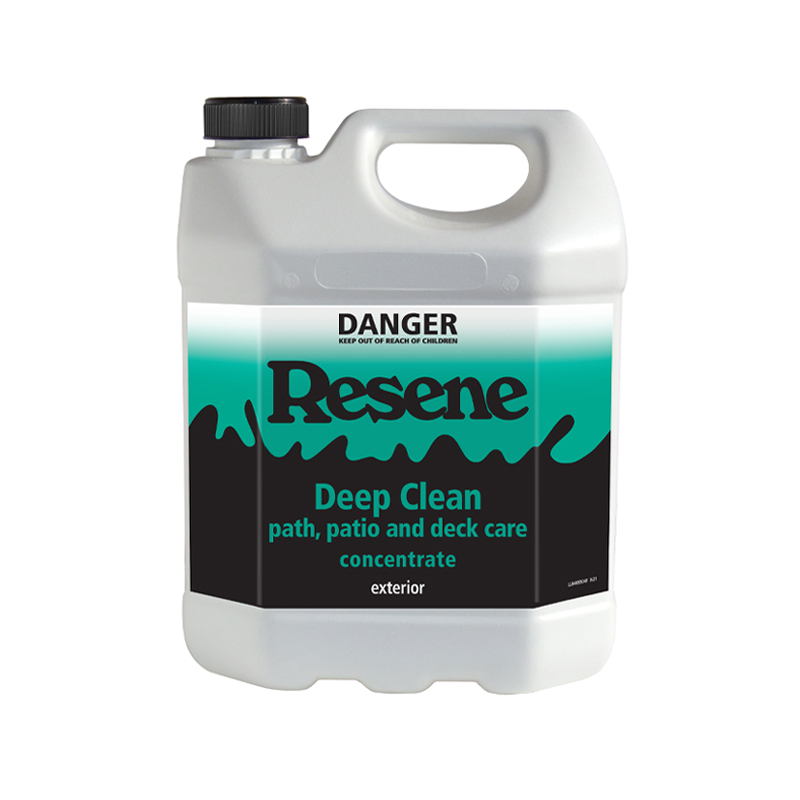Exterior projects such as pergolas, retaining walls or fences often use rough sawn or band sawn timber, which needs a different painting and staining approach to flat sawn timber such as weatherboards.
But before you pick up a paintbrush, the first step is to treat the timber for moss, mould and algae using Resene Moss & Mould Killer. Due to the rugged surface of rough sawn timber, mould spores can penetrate deep into the grain of the wood, and if left untreated it can grow through new paint and damage and discolour the paint.
Dilute Resene Moss & Mould Killer following the instructions on the pack and apply using a garden sprayer (remember to wear protective gear such as a mask and gloves). Allow the product to soak into the timber for 48 hours before scrubbing down and rinsing. Then give the surface a good clean using Resene Paint Prep and Housewash for painted surfaces or Resene Timber and Deck Wash for stained or bare timber surfaces. Although it might be tempting to use a water blaster, this is not advised on rough sawn timber as it can damage the fibres of the wood.
To paint or to stain?
The next thing to consider is whether you wish to stain or paint your timber. “This is a personal preference or is dependent on what’s already on the surface,” says Resene paint expert Jay Sharples. “At my place, I prefer the stained look, but it does require more regular maintenance.”
Rough sawn timber will need 30 to 40 per cent more paint and stain than flat wooden surfaces due to the rugged texture and depth of the wood grain, so factor this into any paint or stain calculations. If you’re choosing paint, opt for an exterior paint such as Resene Lumbersider Low Sheen, a waterborne paint ideal for harsh outdoor conditions. If your project requires a sleeker look, Resene Sonyx 101 is an exterior semi-gloss paint which is also a good option, especially if the surfaces require easy cleaning.
Staining exterior rough sawn timber will highlight the wood grain, creating a more natural look than paint. Resene Waterborne Woodsman wood stain is ideal for many exterior projects including rough sawn pine fences. If your timber has been previously stained, check what product was used – if an oil-based stain was used, opt for Resene Woodsman Wood Oil Stain. If you’re unsure what product to use, ask the friendly staff at your local Resene ColorShop.
Staining timber is often faster than painting, but it will need to be reapplied every two to three summers. Stains are semi-transparent so the colour of the stain will vary based on the timber beneath – darker timbers such as cedar will have a different end result to lighter timbers like pine or Siberian larch. It pays to test the colour on a timber offcut before committing to your colour. Luckily, Resene Waterborne Woodsman stains are available in Resene testpots.


